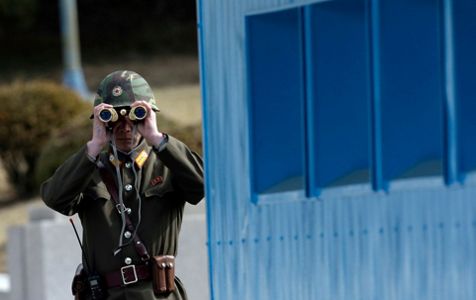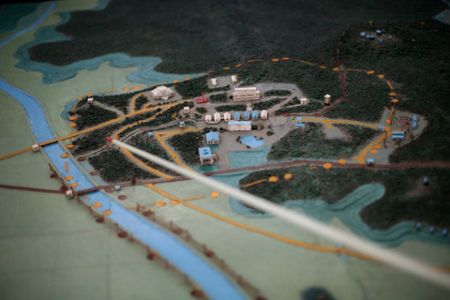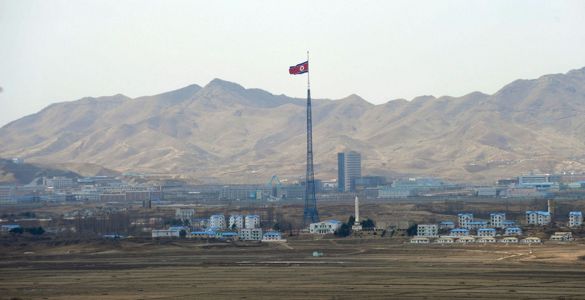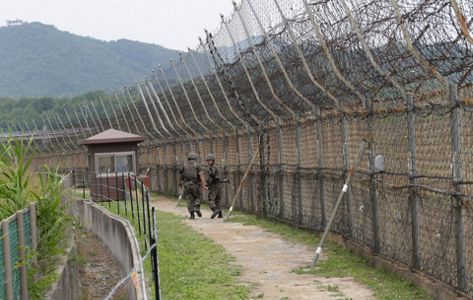Low-slung buildings, blue huts and somber soldiers dot the border village of Panmunjom inside the DMZ, or demilitarized zone, the swath of land between North and South Korea where a U.S. soldier on a tour crossed into the North under circumstances that remain unclear.
The soldier was on a tour of the storied border town, inside the heavily fortified 154-mile-long (248-kilometer-long) DMZ, when the crossing happened, U.S. officials said Tuesday. It remained unknown what prompted the soldier's actions or what the motivations might have been. The soldier was believed to be in North Korean custody.
The DMZ is lined with observation posts on both sides, whose soldiers watch the border and each other carefully for any signs of transgression. North and South Korea remain technically in a state of war since the hostilities in Korean War ended and an armistice was signed — at Panmunjom — in 1953. Neither nation has direct jurisdiction over Panmunjom, where a concrete slab divides the two nations.
North Korea, whose formal name is the DPRK, or the Democratic People's Republic of Korea, maintains tight controls on entry and has been known to punish those who illegally cross the border from South Korea into its territory. Not all of the frontier with South Korea is as strictly patrolled as the DMZ around Panmunjom, though it is unclear how intensively the North patrols its side in more remote areas.
The North under the Kim family and the third-generation current leader, Kim Jong Un, is a tightly controlled society, and very few Americans are in the country at any given time; the two countries have no diplomatic relations and typically conduct any necessary diplomacy through third countries.
While the South Korean side of the DMZ brings in frequent tourists, few North Koreans have ever ventured either to or near their side of the heavily fortified DMZ. On the South Korean side, though, the different areas where tourists are welcomed sometimes take pains to put on a positive spin, with colorful ribbons tied to railings and the occasional ribbon-wielding dancer performing not far from barbed wire and stone-faced soldiers. Cameras are OK in some locations and prohibited in others.
During the politically inflected 2018 Olympics in the South Korean town of Pyeongchang, Associated Press journalists were shown the baby blue-colored room in Panmunjom that's the only spot where high-level talks are held between the two countries. In the room was a large wooden table where talks are held. The border runs right down the middle of it.
At one point during another 2018 visit at another site along the DMZ, an AP illustrator was sketching the view below when a South Korean soldier came over and tore four pages from his book.
Tours to the southern side of Panmunjom reportedly drew around 100,000 visitors a year before the pandemic, when South Korea restricted gatherings to slow the spread of COVID. The tours resumed fully last year.
There have been a small number of U.S. soldiers who went to North Korea during the Cold War, including Charles Jenkins, who deserted his army post in South Korea in 1965 and fled across the DMZ. He appeared in North Korean propaganda films and married a Japanese nursing student who had been abducted from Japan by North Korean agents. He died in Japan in 2017.
___
Associated Press journalists Paul Newberry, Cara Rubinsky, Claire Galofaro and Howie Rumberg contributed to this report.
Copyright 2023 The Associated Press. All rights reserved. This material may not be published, broadcast, rewritten or redistributed without permission.








